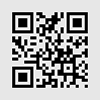
4
in order quickly during travelling or busi-
ness trips, but it does not replace the usual
household iron.
IRONING WITHOUT AN IRONING BOARD
During travelling, an ironing board is not al-
ways at hand, for such cases it is enough to
lay twofold terry towel on the flat surface. Pre-
liminary make sure, that the surface is heat
resistant and waterproof. Do not use glass or
plastic surfaces.
BEFORE FIRST USAGE
• Unpack the iron; remove the protective
cardboard covering (if any) from the iron
sole (9).
• Wipe the iron sole with a dry cloth.
• Before connecting the iron to the electric
network set the power supply switch (8)
in correspondence with the voltage of the
electric network. After usage of the iron with
network voltage 110 V always set the switch
(8) to the 220 V position, it will prevent mal-
function of the iron while connecting the iron
to the electric network with the increased
voltage.
FILLING THE WATER TANK
Before filling the water tank with water, make
sure that the iron is unplugged.
• Lift the handle (1) and it will lock, to lower
the handle (1) press the (7) button and low-
er the handle.
• Set the temperature control (11) to the “min”
position and the constant steam supply han-
dle (12) to the “ ” position (steam supply is
off).
• Open the water tank lid (3).
• Do not pull the lid strongly, slight effort is
enough.
• Fill the water tank with water, using the
measuring jug (13); firmly close the lid
(3).
Note:
Steam will not be supplied if there is no
water in the water tank.
•
If you need to refill the water tank during
ironing, switch off the iron and remove
the power plug from the outlet.
•
Do not fill the water tank with scent-
ed liquids, vinegar, starch solution,
descaling reagents, chemical agents
etc.
•
After you finish ironing, switch off the
unit, wait until it cools down completely
and then open the water tank lid (3) and
drain the remaining water.
IRONING TEMPERATURE
Before operating, test the heated iron on the
cloth to be sure that the iron sole (9) and the
water tank (4) are clean.
• Always check the recommended iron tem-
perature indicated on the tag before iron-
ing.
• If the tag does not list the recommended
ironing temperature, but you know the type
of fabric, then use the following table to de-
termine the proper temperature.
Marks Fabric type (temperature)
•
Synthetics, nylon, acryl, polyester (low
temperature)
••
Silk/wool (medium temperature)
•••
(max)
Cotton/linen (high temperature)
• This table is only for smooth materials. Fab-
rics of other types (crimped, raised etc.) are
best ironed at low temperature.
• First sort items by ironing temperature: syn-
thetic materials to synthetic materials, wool
with wool, cotton with cotton etc.
• The iron heats up faster than is cools down.
For this reason it is recommended to begin
ironing at low temperature (for instance
synthetic fabrics).
• After that, move to higher temperature iron-
ing. Cotton and linens should be ironed
last.
• If an item is made of a mix of fabrics, then
the iron should be set for the fabric with
the lowest ironing (for instance if an item is
made of polyester and cotton, it should be
ironed at the temperature used for ironing
polyester “•”).
• If you cannot define the fabric the item is
made of, find a place on it that is hidden
while wearing and, on practice select the
ironing temperature (always start at the low-
ENGLISH
1228.indd 4
1228.indd 4
29.03.2011 12:57:21
29.03.2011 12:57:21
